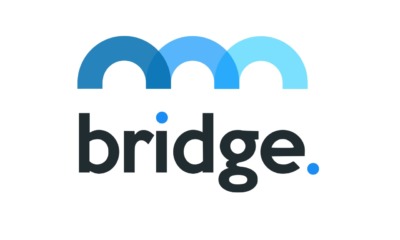Don't Miss
The Cryptocoin Insurance ICO Is Launching On November 1

Tokens of the first options exchange with the possibility of insuring deposits against fall go for sale on November 1.
Cryptocoin Insurance deals with ensuring positions opened by traders and investors. The insured event occurs in case of a sharp price deviation in any direction. In the first year of operation, customers can ensure their positions in 10-15 cryptocurrencies dominating the market. In the second year, Cryptocoin Insurance promises to bring the number of insured cryptocurrencies to 30.
How does it look in practice?
For example, a customer buys insurance that costs 0.1 bitcoin for a deposit of 100 ETH. The insurance premium is 5 ETH, paid as a lump sum when purchasing insurance. For this, the customer can receive insurance in the amount by which the deposit will fall, if the price drops by 20% in 5 days. In this case, it is 20 ETH.
Several variables can be seen here: the amount of the insurance premium, the amount of time covered by insurance, the size of the fall (growth) at which it is triggered. Due to this, a large number of insurance policies arise, each of which is tied to some variables. Given that insurance can be purchased for different cryptocurrencies with different volatility (and hence the insurance premium), the number of possible options for which the risk can be insured increases several times.
The market the company enters is estimated at $10-20 bln a day today. This is a volume of trading conducted daily on major cryptocurrency exchanges. It is worth noting that Cryptocoin Insurance focuses on another segment: companies, large private investors and funds that store fixed assets in cold wallets and do not risk bringing them to exchanges.
Insurance services provided by Cryptocoin Insurance are even more relevant for such customers. The matter is that storing cryptocurrency in a cold wallet makes it almost impossible to eliminate the risks of its rapid fall. Loosely speaking, it cannot even be sold at a loss on stop loss, which customers with a deposit on a cryptocurrency exchange can do.
How are the risks of the very company insured?
The main question many readers already have is “What will Cryptocoin Insurance do with its own risks?”. Recall Hurricane Michael, which has just recently swept along the coast of Florida, bringing enormous destruction. A person far from the insurance business may decide that all the companies insuring the property of clients in this region have gone bankrupt.
However, it is not like that. Of course, companies will suffer huge losses, but only a few of them will go bankrupt. It’s all about “reinsurance”. Having collected a large number of insurance premiums, on warm days, when nothing predicted the arrival of Hurricane Michael, companies sold part of these insurances to other, larger insurance companies situated in other parts of the country. This is how they shifted the risk to others, who will come to help them today.
Cryptocoin Insurance does the same. “But who can buy such insurances?” This is the second question that comes to mind. In this volume – most likely to no-one. And this is the main reason why there are no insurance companies in the market in this niche today.
The solution of Cryptocoin Insurance
The company has developed a new business model. Instead of looking for buyers for already sold insurances, Cryptocoin Insurance is launching its own option exchange. The following question may arise: how are insurance and options related?
Curiously enough, they perfectly get along with this business model. Let’s remember what was discussed at the beginning of the article? Each sold insurance contains the size of the insurance premium, the amount of time covered by the insurance, the amount of fall (growth) at which it is triggered.
But this is a classic option from this standpoint. This is a simple and comprehensible solution to the problem, which nobody has ever thought of before.
As a “reinsurance”, Cryptocoin Insurance can buy an option, which guarantees it to make a profit on an exchange position that will be unprofitable under insurance. Option sellers are customers who want to get quick, comprehensible and, most often, very easy profits.
What is the point for Cryptocoin Insurance? Again, it’s simple. The main interest is in the premium that the company receives between how much it sells insurance for and for how much it acquires an option insuring its risk. In both cases, Cryptocoin Insurance is actually a market maker of the process, taking away all the spread.
The second, possibly a much more profitable way of earning is the commission from the options exchange operation. Customers pay commissions for each transaction on the purchase/sale of options, which are several times higher than those on simple cryptocurrency exchanges.
What problems can the company face?
Risks can be trading and non-trading. The former are the cases when the whole market moves in the same direction for several days, constantly generating the onset of insured events. It is important that automatic algorithms that calculate the size of positions, risks, etc., work in real time without errors. This allows to instantly cut the customer positions by margin call on the exchange, without coming to an end when their losses come upon the company.
Besides, the risk management department should closely monitor the situation when the number of insurances sold does not greatly exceed the size of options that are purchased for reinsurance.
The non-trade risks include the need to carefully develop the options exchange engine + build mathematical and option models. The latter will differ from those used today on the market for options for stocks, precious metals, etc., at least due to the completely different volatility.
In this case, the advantage is the lack of gaps, and their risks should be laid in the model since the cryptocurrency market operates 24/7.
Therefore, as always, the question is in the technical implementation of the project. If it goes smoothly, we can expect a queue of customers who finally got the opportunity to ensure their own risks.
The Cryptocoin Insurance ICO is launching on the Ethereum platform on November 1.
Website: https://ccin.io
Whitepaper: https://ccin.io/doc/Whitepapereng.pdf
Facebook: https://www.facebook.com/ccinofficial/
Twitter: https://twitter.com/ccin_official
Medium: https://medium.com/@ccin_official
Telegram chat: https://t.me/ccin_official
Image courtesy of Pexels
Don't Miss
A Guide to Exploring the Singaporean ETF market

Singapore’s Exchange Traded Fund (ETF) market has grown, offering investors diverse investment opportunities and access to different asset classes. As the market evolves, investors must navigate these uncharted waters with a clear understanding of Singapore’s ETF landscape. This article explores the trends, challenges and strategies for navigating the Singapore ETF market. To start investing in ETFs, you can visit Saxo Capital Markets PTE.
The Singaporean ETF Market: Exponential Growth
The Singapore ETF market has seen significant growth in recent years, with an increasing number of ETFs covering a wide range of asset classes and holders. different investment topics.
One of the notable trends in the Singapore ETF market is the growing diversity of available options. Investors can now choose from ETFs that track domestic and international stock indexes, bonds, commodities, and specialist sectors or themes. This diverse range of ETFs allows investors to create comprehensive portfolios tailored to their investment goals.
The growth of the ETF market in Singapore is also due to growing investor demand for low-cost, transparent, and accessible investment vehicles. ETFs offer benefits such as intraday liquidity, real-time pricing, and the ability to trade on exchanges. These characteristics have made ETFs attractive to retail and institutional investors who want exposure to different asset classes.
Regulatory Landscape and Investor Protection
The Monetary Authority of Singapore (MAS) is the…
Don't Miss
Property Loans for Foreigners in Singapore That You Must Know About

Intending to invest in a residential or commercial property in Singapore?
When it comes to foreigners applying for a loan in Singapore, things can be pretty hard regardless of the reason whether you need the property for personal or business purposes.
In Singapore, buying a property is challenging, whether you are a foreigner or a native, and sometimes applying for a loan is the only way for you to afford it.
HOW MUCH CAN YOU BORROW FOR A PROPERTY LOAN IN SINGAPORE?
As for the Foreigner Loans, in Singapore, there is an exact amount of money you can borrow to finance the purchase of a property.
In this sense, Singapore has the Loan to Value Ratio (LTV).
The LTV ratio is what determines the exact amount of money you can borrow for a property loan, which changes depending on where you try to obtain the loan:
- If you are applying for a bank loan, you can borrow a maximum of 75% of the value of the property you want to purchase. That means if you are looking for a property that costs $500.000, the maximum amount of money a bank lender can give you like a loan in Singapore is going to be $375.000.
- When you are applying for a loan with a Housing…
Don't Miss
CoinField Launches Sologenic Initial Exchange Offering

CoinField has started its Sologenic IEO, which is the first project to utilize the XRP Ledger for tokenizing stocks and ETFs. The sale will last for one week and will officially end on February 25, 2020, before SOLO trading begins on the platform. Sologenic’s native token SOLO is being offered at 0.25 USDT during the IEO.
Earlier this month, Sologenic released the very first decentralized wallet app for SOLO, XRP, and tokenized assets to support the Sologenic ecosystem. The app is available for mobile and desktop via the Apple Store and Google Play. The desktop version is available for Windows and Mac.
“By connecting the traditional financial markets with crypto, Sologenic will bring a significant volume to the crypto markets. The role of the Sologenic ecosystem is to facilitate the trading of a wide range of asset classes such as stocks, ETFs, and precious metals using blockchain technology. Sologenic is an ecosystem where users can tokenize, trade, and spend these digital assets using SOLO cards in real-time. The ultimate goal is to make Sologenic as decentralized as possible, where CoinField’s role will be only limited to KYC and fiat ON & OFF ramping,” said CoinField’s CEO…
-

 Blogs6 years ago
Blogs6 years agoBitcoin Cash (BCH) and Ripple (XRP) Headed to Expansion with Revolut
-

 Blogs6 years ago
Blogs6 years agoAnother Bank Joins Ripple! The first ever bank in Oman to be a part of RippleNet
-

 Blogs6 years ago
Blogs6 years agoStandard Chartered Plans on Extending the Use of Ripple (XRP) Network
-

 Blogs6 years ago
Blogs6 years agoElectroneum (ETN) New Mining App Set For Mass Adoption
-

 Don't Miss6 years ago
Don't Miss6 years agoRipple’s five new partnerships are mouthwatering
-

 Blogs6 years ago
Blogs6 years agoCryptocurrency is paving new avenues for content creators to explore
-

 Blogs6 years ago
Blogs6 years agoEthereum Classic (ETC) Is Aiming To Align With Ethereum (ETH)
-

 Blogs6 years ago
Blogs6 years agoLitecoin (LTC) Becomes Compatible with Blocknet while Getting Listed on Gemini Exchange


















